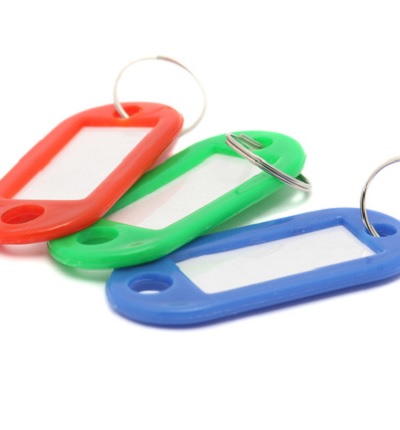Introduce the terminology and standardize it!
Article#: 00035
Date: 2020-10-16
Author: Radim

Identify, clarify and standardize all names and terms already at the beginning of the project.
This applies, for example, to machine parts and components, signals, processes, functions, etc.
Do it before you and others use the names and terms.
Do this before having a debate and writing any documents about the project.
Avoid ambiguity in naming and using multiple terms for one thing.
Avoid spreading false terms.
(Because it is difficult to find and correct these incorrect terms later.)
Make a list of all the names with a description of their meaning and a picture of their appearance.
If you work with people in an international field or supply customers in multiple languages, ask a technical expert to translate the list into other languages.
You can get a correct translation from the customer.
Usually he knows the technical terms best in his language.
(Probably better than an interpreting agency.)
Have several experts review the terms and translations.
Use only agreed terms in discussions, emails, protocols, documentation, program code and comments, electrical diagram, graphical user interface, operating manual, etc.
If you are not sure, look for the correct term in the list.
If you can't find it, contact the administrator of this list and enter a new suitable term in the list.
If possible, avoid using abbreviations as they may be difficult to translate into another language.
When implementing a third-party product, use the terminology from their documentation.
Also get the documentation to the third-party product in the languages you need to copy the terms from there.
(For example, a text from a third-party provider can be implemented as alarm text in the graphical user interface.)
© Radim-Automation, 2020–2025. All rights reserved.
Sharing of this article is permitted with proper attribution (link to the original page).
Related previous articles:
- Realize every good idea ASAP!
- Stay alert!
- Have an expert on hand!
- What does the customer need?
- Don't disappoint your customer!
- Ask questions!
- Request bottom-up input!
- Focus on target!
- Sharpen your axe before you start felling!
- Don't hide any problem!
- Check the result!
- Keep it simple!
- Good communication is important
- Development is evolution
- Don't neglect and don't skip any step!
- Transparency and reliability
- From an idea to a consistent system
Related next articles:
- Do the right things and do them right!
- Store email messages in the project folder!
- HMI and PLC applications should grow together
- Write down your best practices and processes!
- Who knows it?
- Write and accept only readable code!
- Use a usefull styleguide!
- Functional and intuitive HMI
- Who will operate?
- Collect all the requirements and sort them!
- Project leader
- Learn from your journey!
- A good concept = Complete set of suitable solutions
- Abbreviations
- Variable names
- Visual modeling
- Documentation issues
- Talk to operators
- PLC network diagram
- Keep the documentation up to date throughout the project
- Maintain order in the program code
- Code formatting
- High Performance HMI
- An irreplaceable employee
- HMI - Have a consistent style
- HMI - Don't overdo it with complex design
- Hidden dangers during commissioning
- The false illusion of rapid progress
- HMI layout design
- HMI navigation
- What makes an HMI intuitive?
Comment#: 00001
Date: 2020-10-16
User: Radim
The risk of spreading false terms is not only ambiguity and incomprehensibility.
Hilarious bad terms can appear especially when words are literally translated from one language to another.
Comment#: 00002
Date: 2020-10-18
User:
Yes this is a great advice to standardize name across the project, from mechanical parts, I/O, electrical print, plc and Hmi tag. Too often I struggle to interpret or understand tag name that is totally different than what maintenance people usually call the device name or change all together from Plc to electrical print. Standardization of PLC structure is always a +.
Comment#: 00003
Date: 2020-10-18
User:
Great basic advice for proper machines development. Also chose name that every new person working on the project can easily understand. Like “DeviceXinposition” instead of “devxipos” where x is the proper name for the device and same name as in print.
Comment#: 00004
Date: 2024-02-22
User: Radim
Is your native language not English and do you work in an international team? Have you agreed on English as the project language within the team? Then please:
1. Install and use all project tools in English.
2. Use English help files for the tools.
3. Write English variable names and comments in the code.
These rules make collaboration between team members, documentation and support tasks easier. Because people will use the same terms.
Do you agree with these rules?
Would you add anything else?
Comment#: 00005
Date: 2024-04-10
User: Radim
"Code conventions are important to programmers for a number of reasons:
• 40%–80% of the lifetime cost of a piece of software goes to maintenance.
• Hardly any software is maintained for its whole life by the original author.
• Code conventions improve the readability of the software, allowing engineers to understand new code more quickly and thoroughly.
• If you ship your source code as a product, you need to make sure it is as well packaged and clean as any other product you create."
- https://en.wikipedia.org/wiki/Coding_conventions